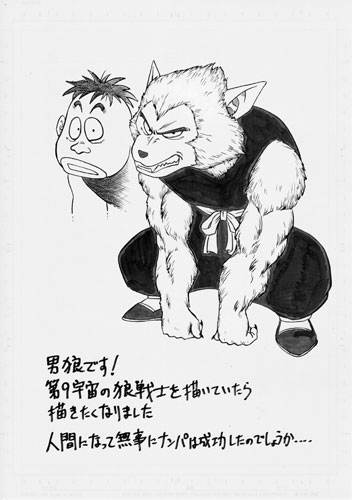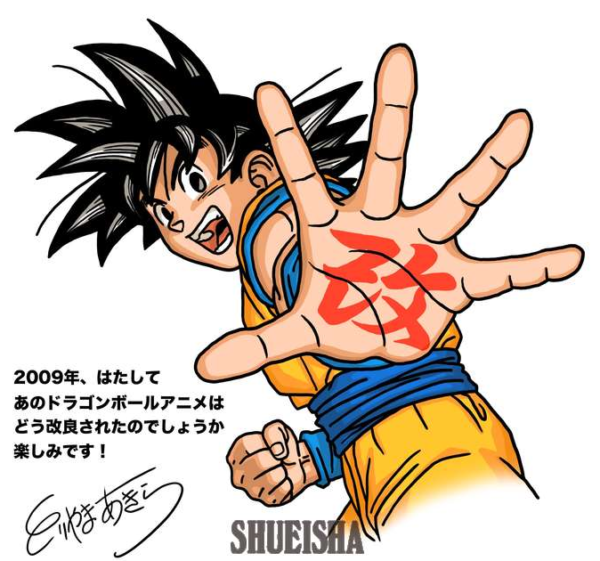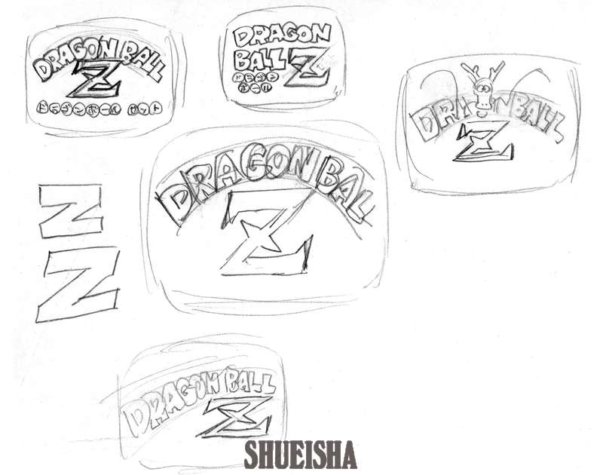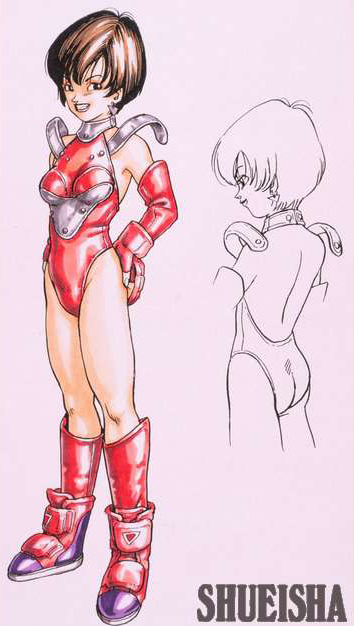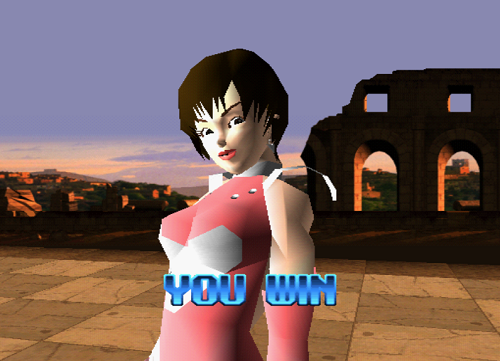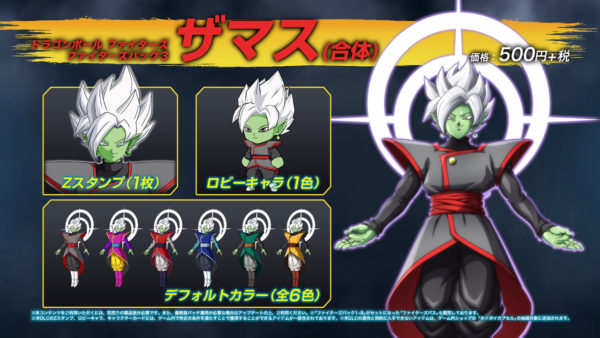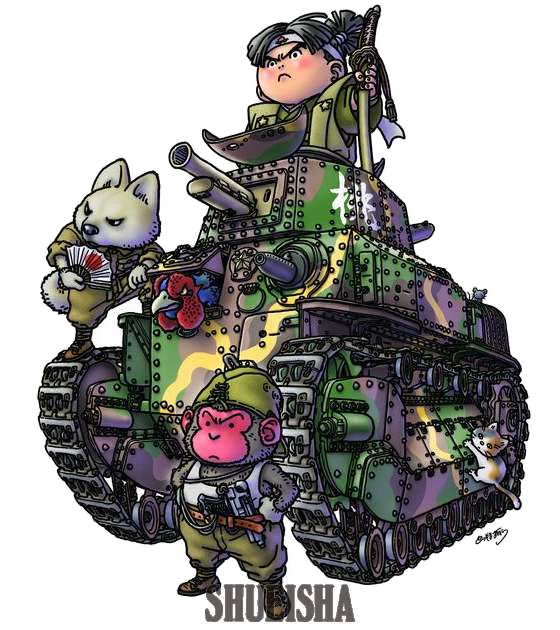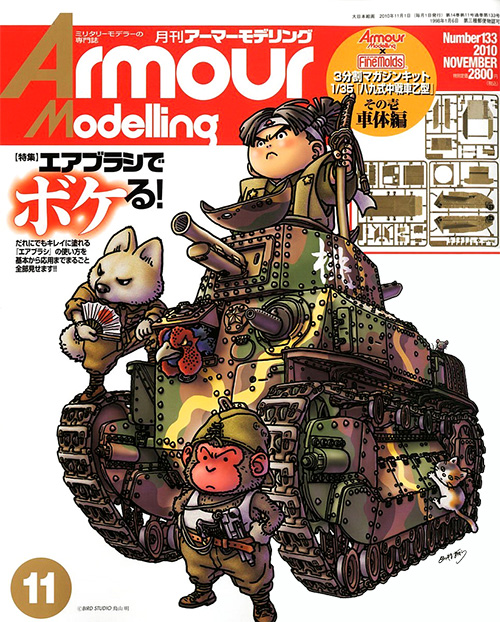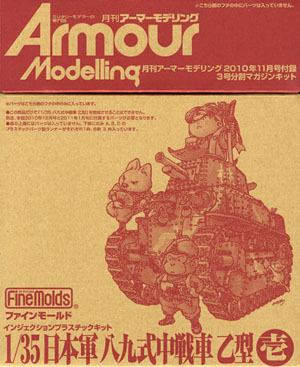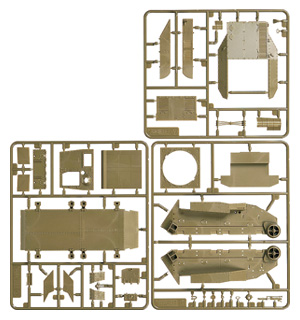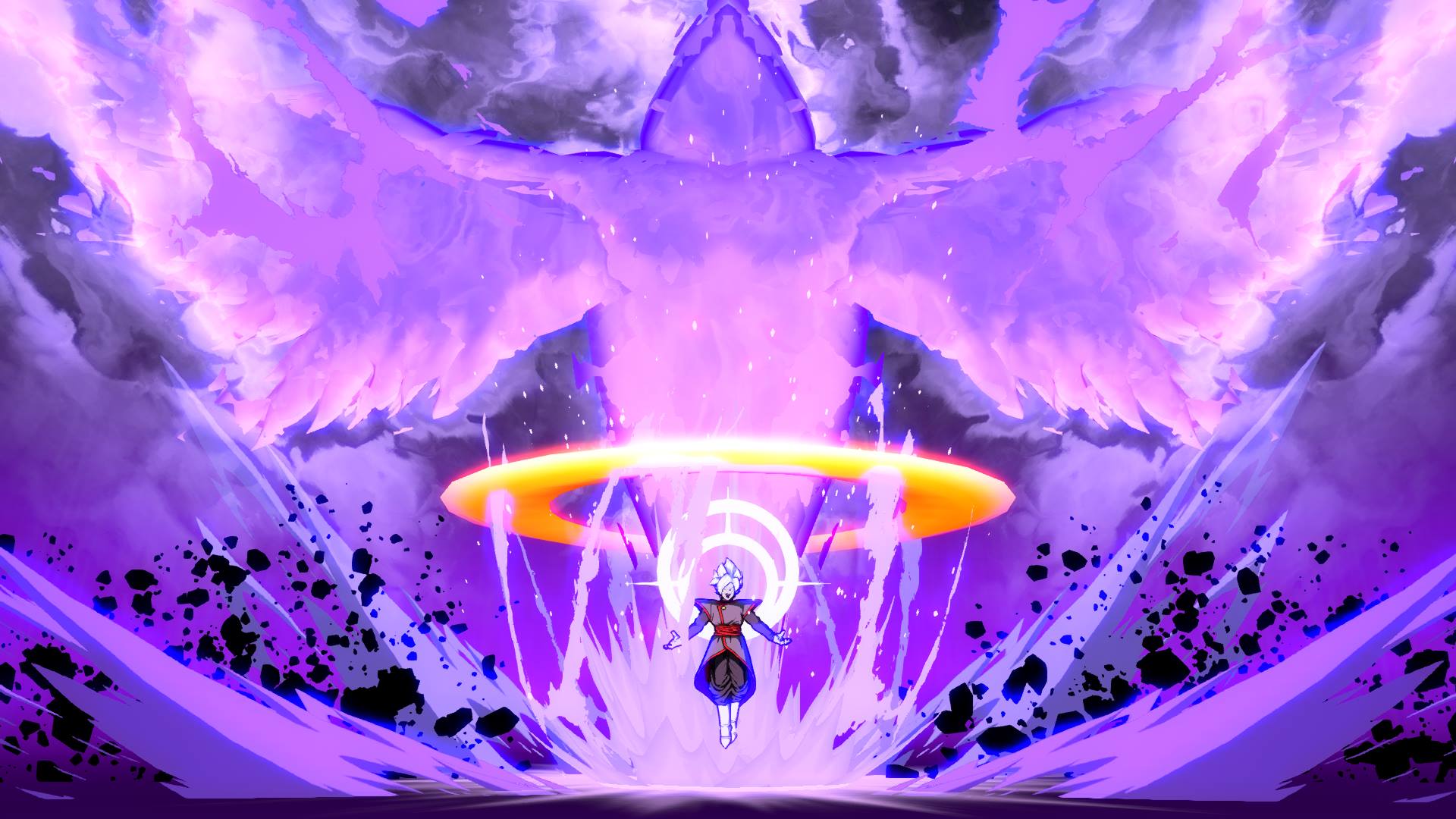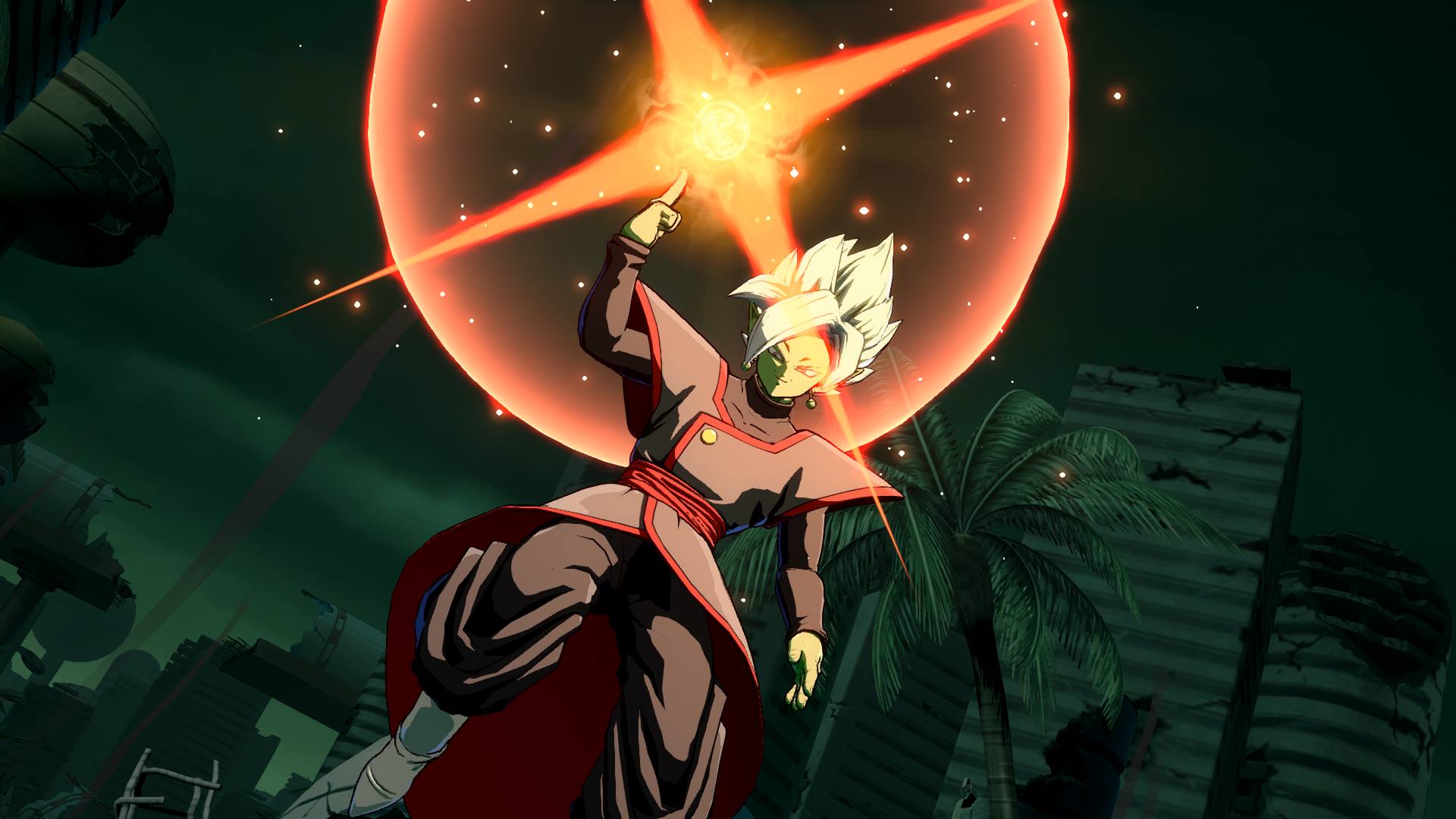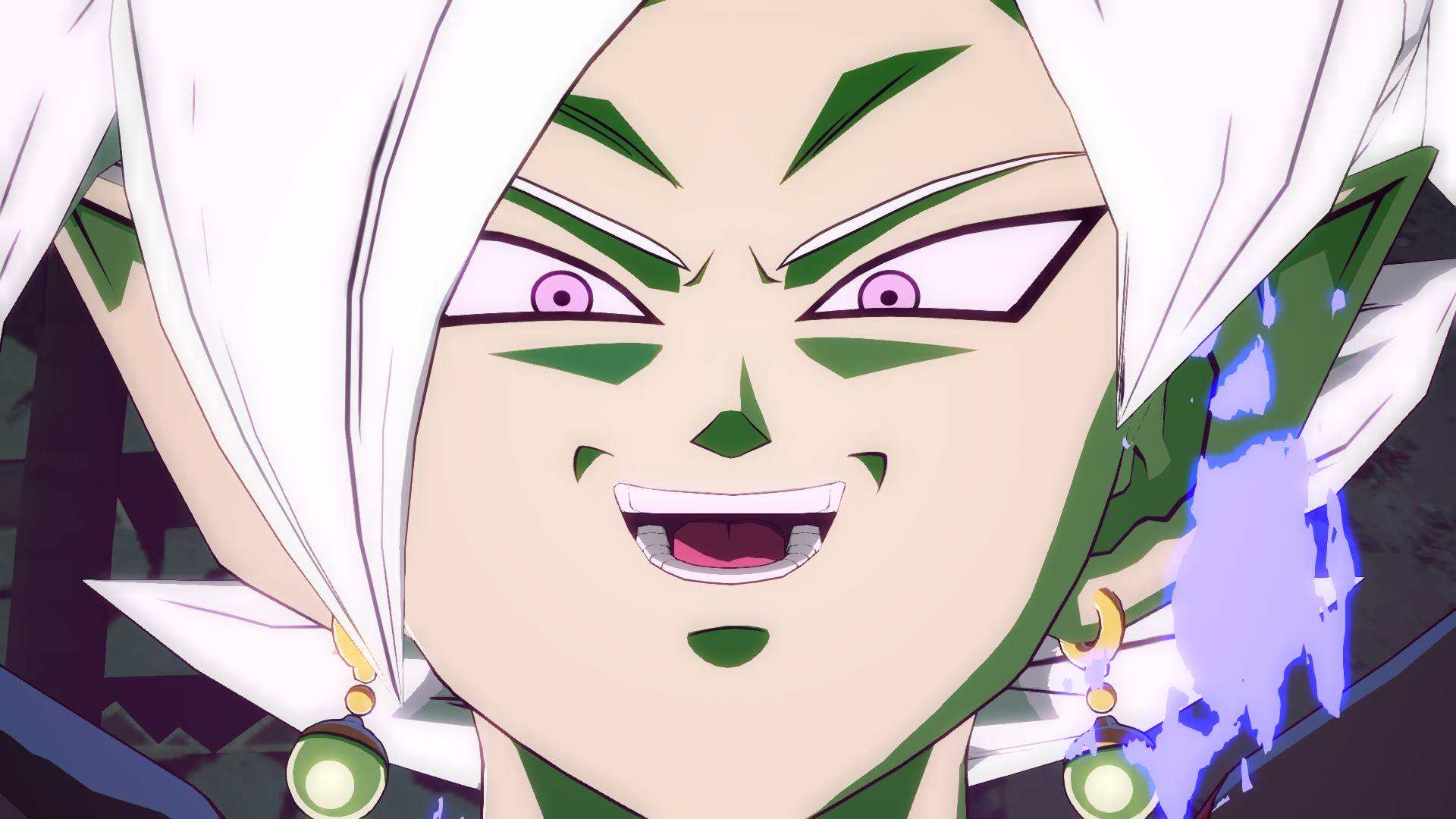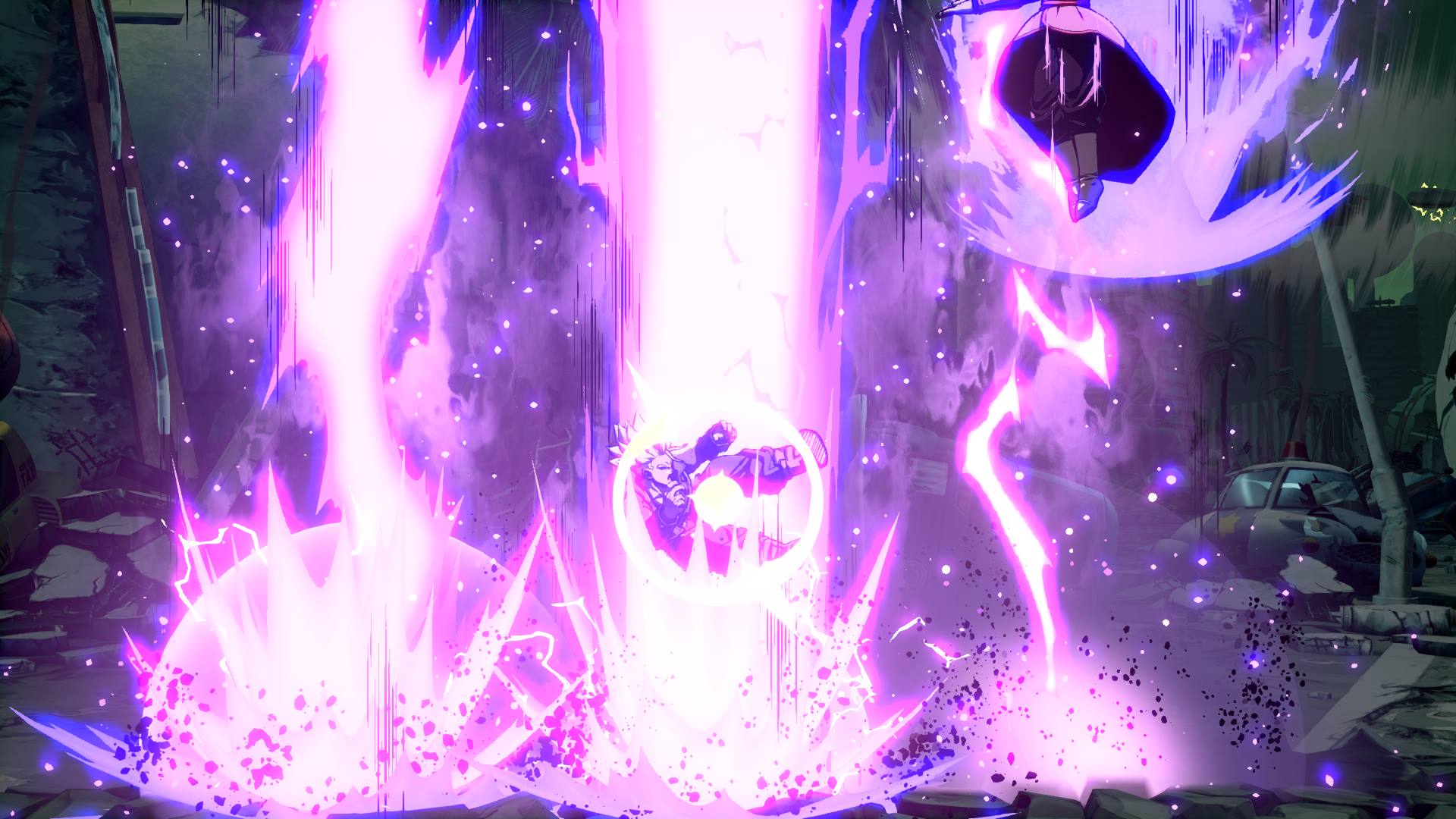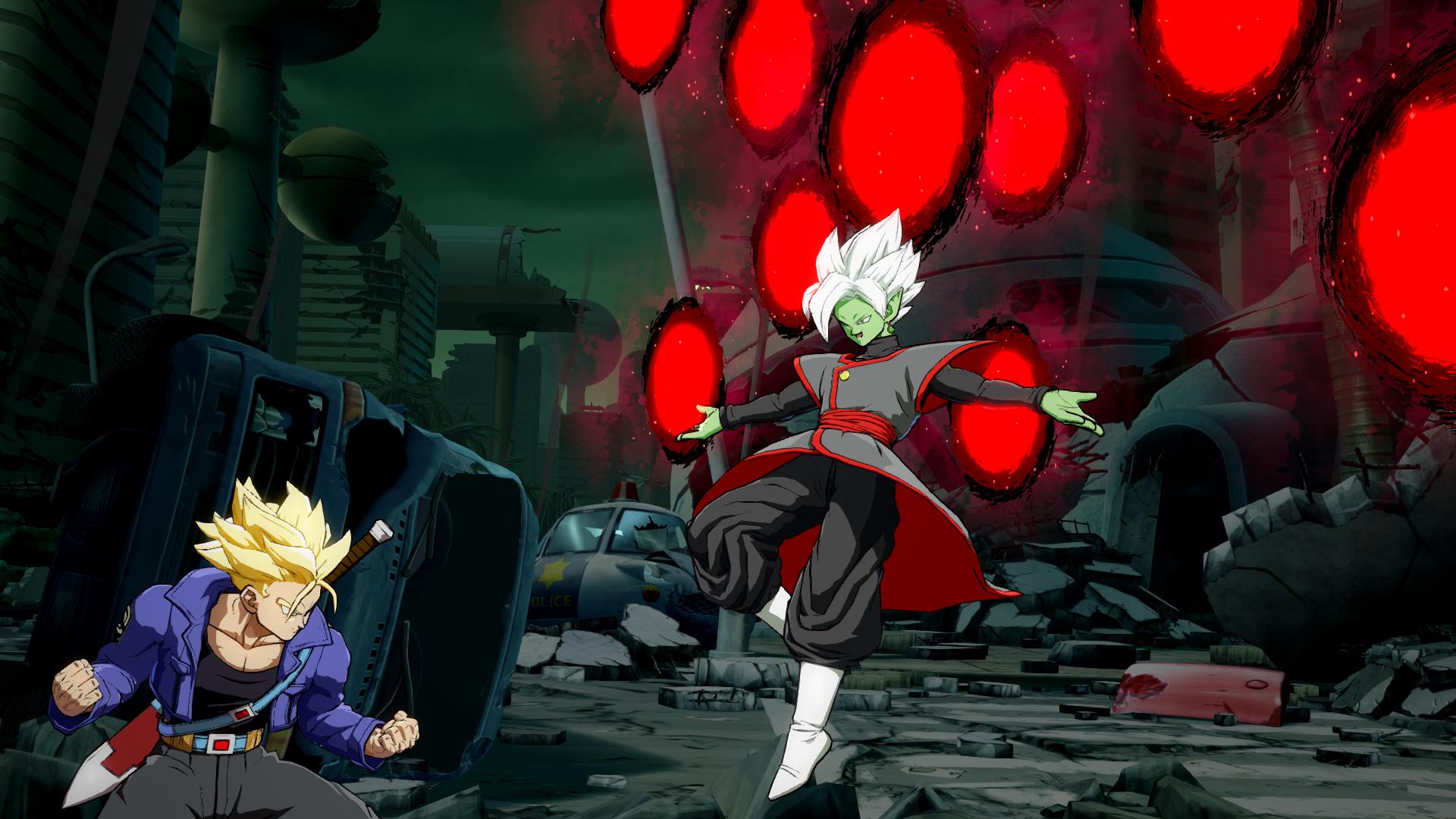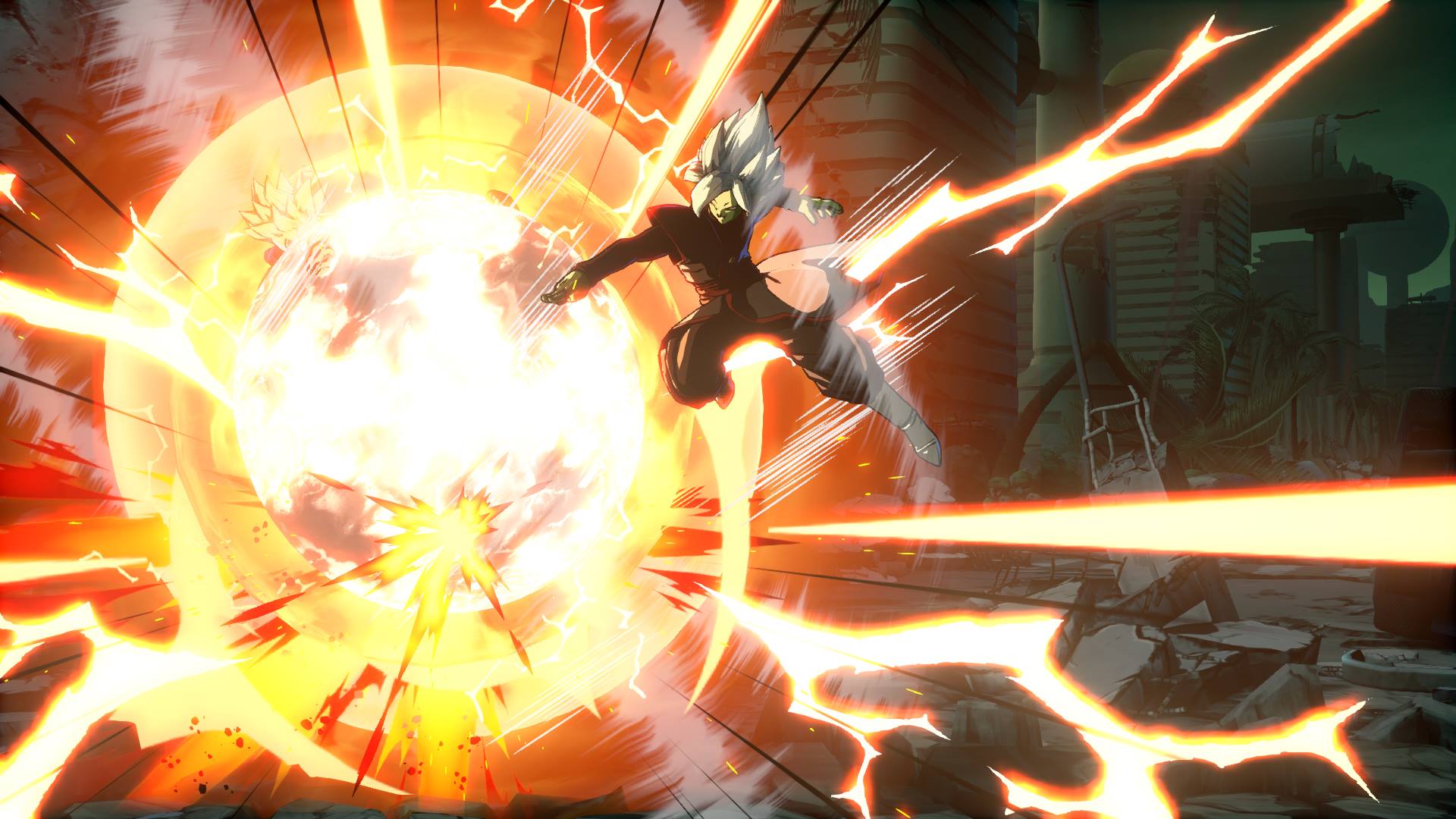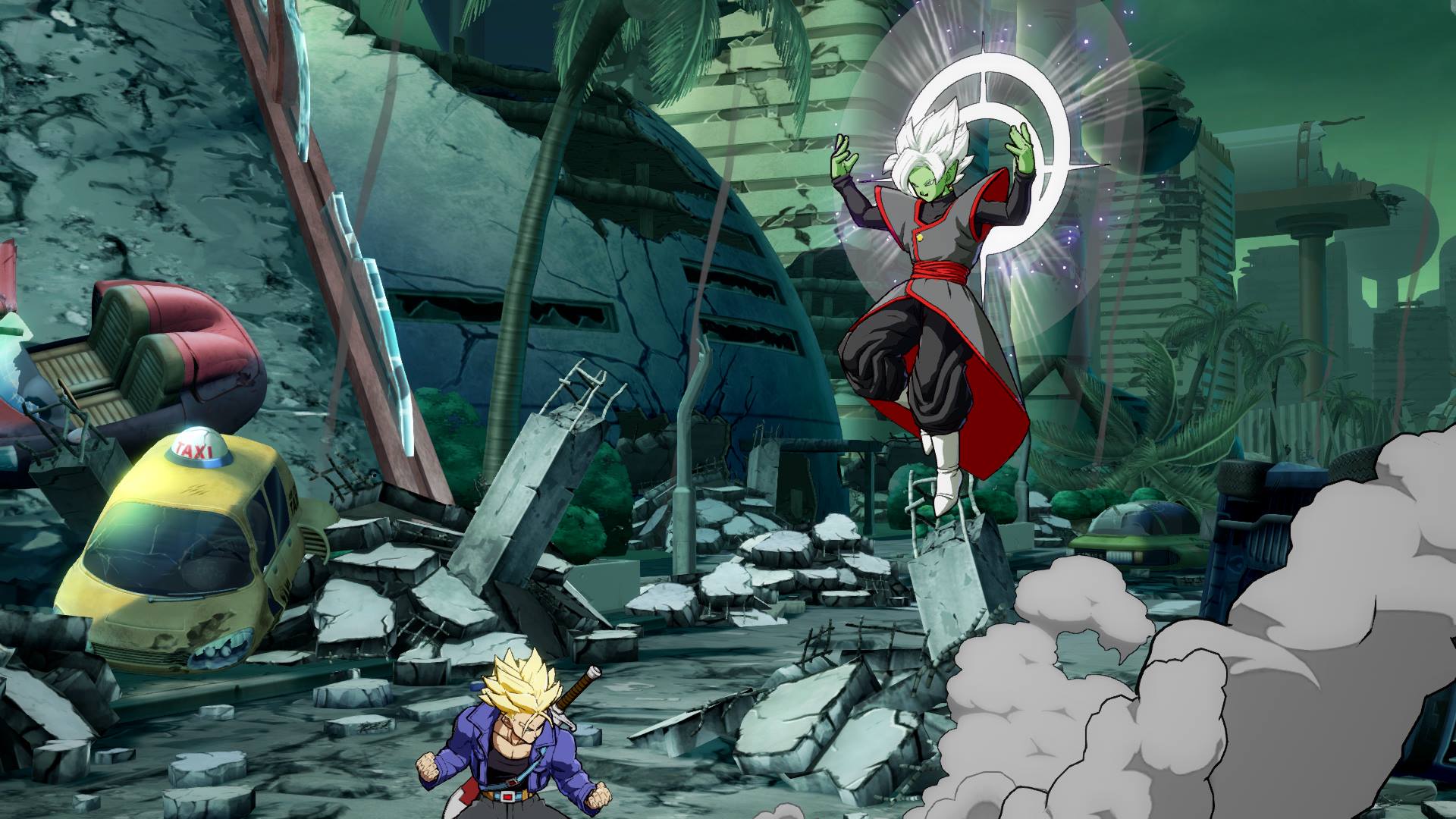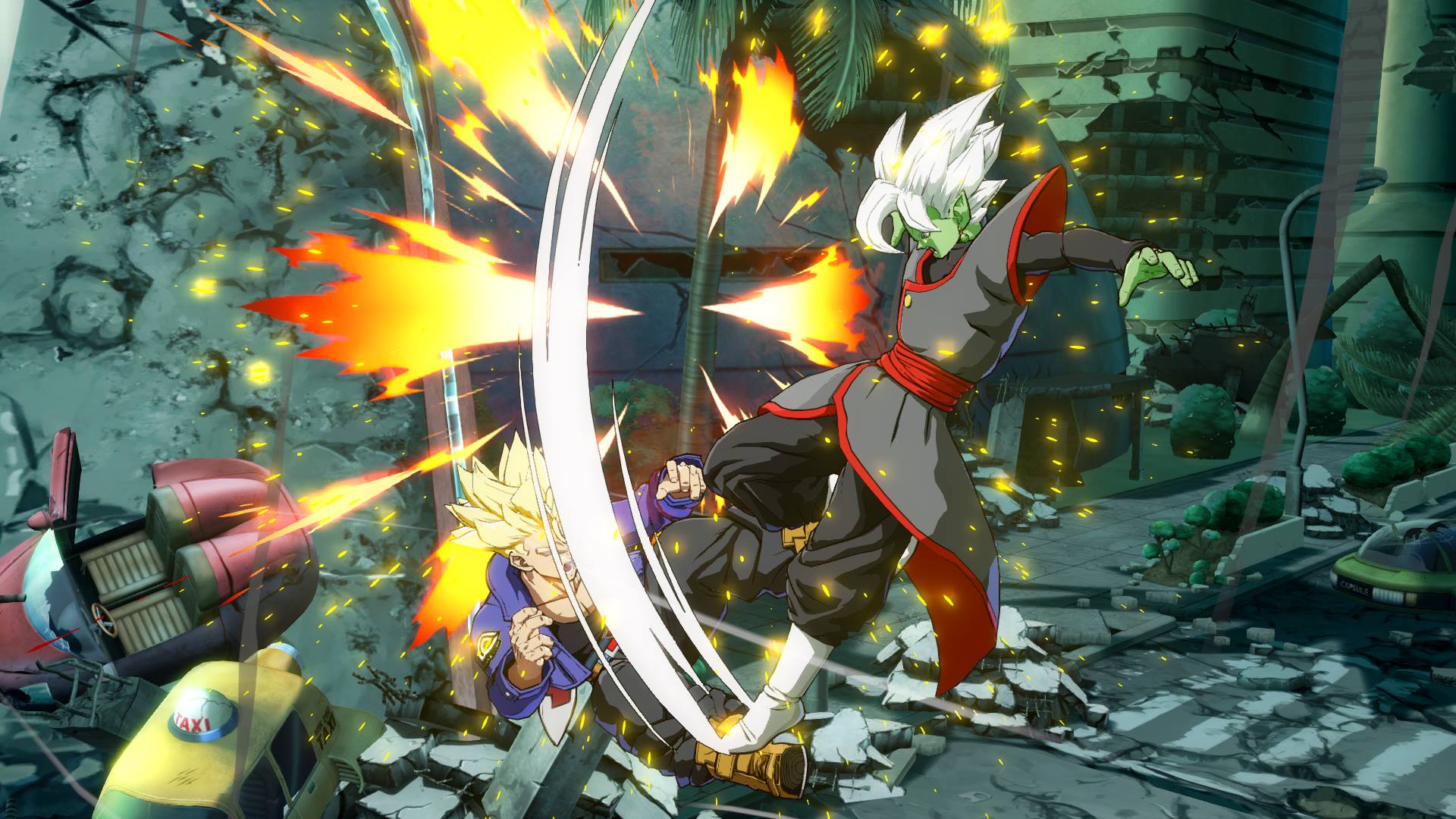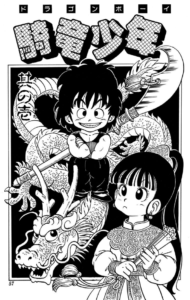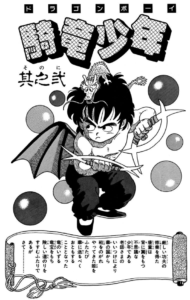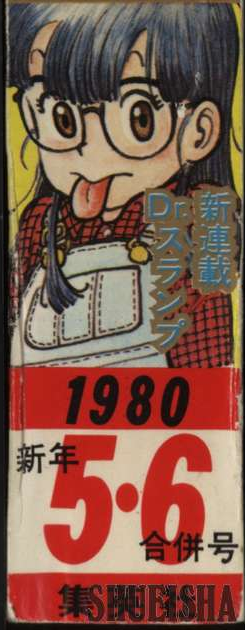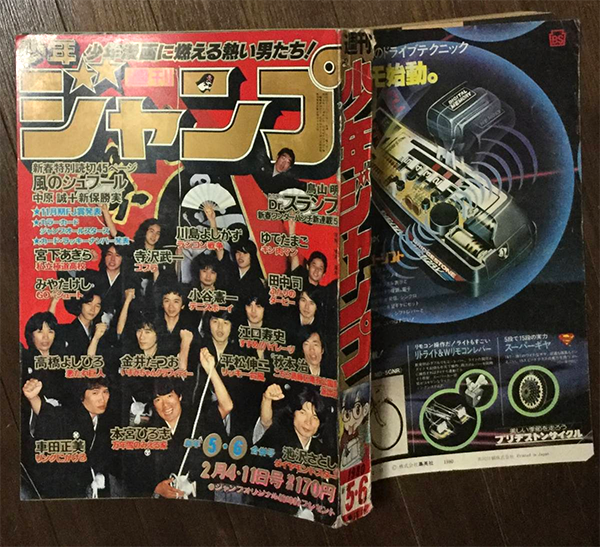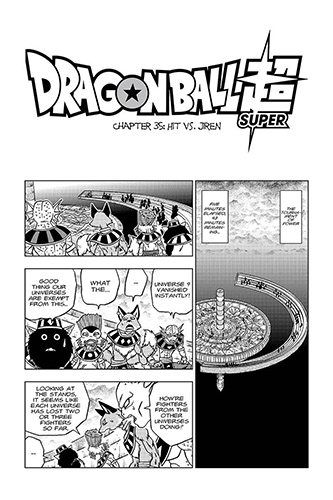In conjunction with the June 2018 issue of Shueisha’s V-Jump magazine over the weekend, Bandai Namco has revealed Merged Zamasu — the Potara fusion of Zamasu and Goku Black from the Future Trunks arc of the Dragon Ball Super series — as the next playable character in Dragon Ball FighterZ by way of paid downloadable content.
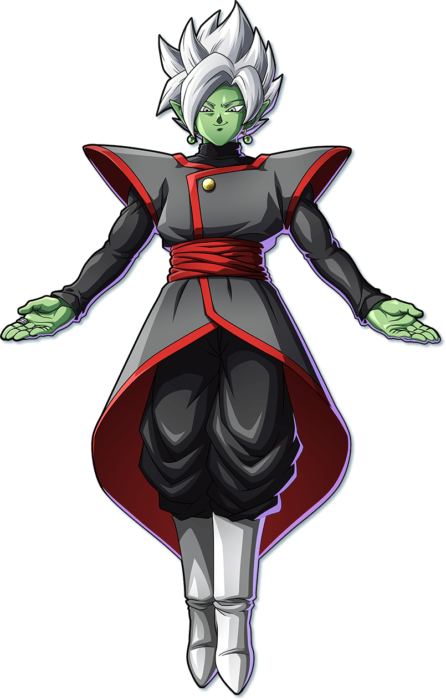
気高くも美しい不死にして最強の神。
自由自在に空中を移動するなど、独特な動きで敵を圧倒する
テクニカルファイター。究極の神は果たして人間に使いこなせるのか?
『絶対の雷』で最後の審判を下し、新たな時代の息吹を宿せ!
The mightiest god in the form of a dignified and beautiful immortal. A technical fighter who can overwhelm opponents through special moves such as being able to move freely through the air. Could a mere mortal possibly use the ultimate god to the fullest?! Hand down final judgement with “Absolute Thunder” and breathe life into a new era!
The promotion in V-Jump mistakenly reprints Broli’s stats, which are corrected on the game’s official website write-up: power as “S”, speed as “S”, reach as “A”, technique as “SS”, energy as “S”, and ease of us as “B”. With some of his special moves — such as “Absolute Thunder” and “Divine Wrath” — Merged Zamasu can move freely in the air after firing.
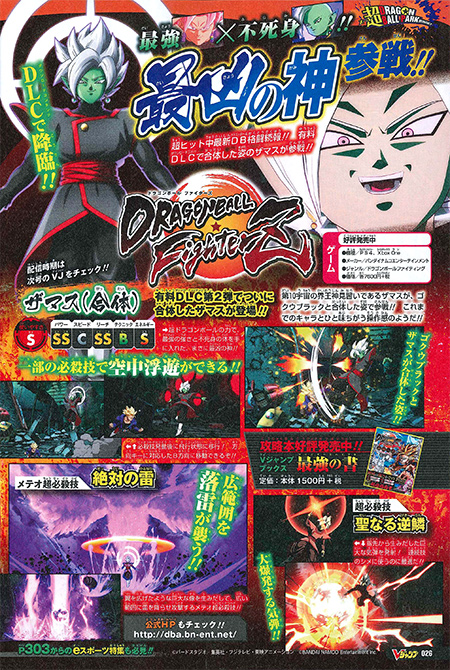
A video featuring Zamasu gameplay is expected tomorrow.
Merged Zamasu will be made available individually, or as part of the game’s game’s optional $34.99 “FighterZ Pass” covering eight total characters. The first two additional characters, Bardock and Broli, were released last month. Though extensive datamining has taken place among fans, the remaining fighters have yet to be officially announced.
The 3-on-3, “2.5D” fighting game is developed by Arc System Works for the PlayStation 4, Xbox One, and PC (via Steam). The game runs at a 1080p resolution and 60fps frame rate, with higher resolutions available on the PlayStation 4 Pro and Xbox One X consoles, as well as the PC. Playable characters include Son Goku, Son Gohan (Cell arc design), Vegeta, Freeza, Cell, Boo (Good), Trunks, Piccolo, Kuririn, #16, #18 (with #17), Yamcha, Tenshinhan (with Chiaotzu), Ginyu (with teammates), Nappa (with Saibaimen), Gotenks, Son Gohan (Boo arc design), Boo (Pure), Hit, Beerus, and Goku Black (with Zamasu), as well as “Super Saiyan God Super Saiyan” (SSGSS, or “Super Saiyan Blue”) versions of Goku and Vegeta that can be accessed early via pre-orders or unlocked through gameplay. The Akira Toriyama-designed “#21” has also been revealed as a new character central to the game’s story mode.
Dragon Ball FighterZ was released 26 January 2018 in North America and Europe, and 01 February 2018 in Japan. Alongside its Japanese release, Bandai Namco announced that they had shipped two million copies of the game, making it the fastest-shipping game in the franchise’s history.
Arc previously worked on Dragon Ball Z: Extreme Butōden for the Nintendo 3DS, as well as the Super Sonic Warriors games (Bukū Tōgeki and Bukū Ressen) on the Nintendo Game Boy Advance and Nintendo DS. The developer is otherwise known for their Guilty Gear and BlazBlue series of fighting games.
